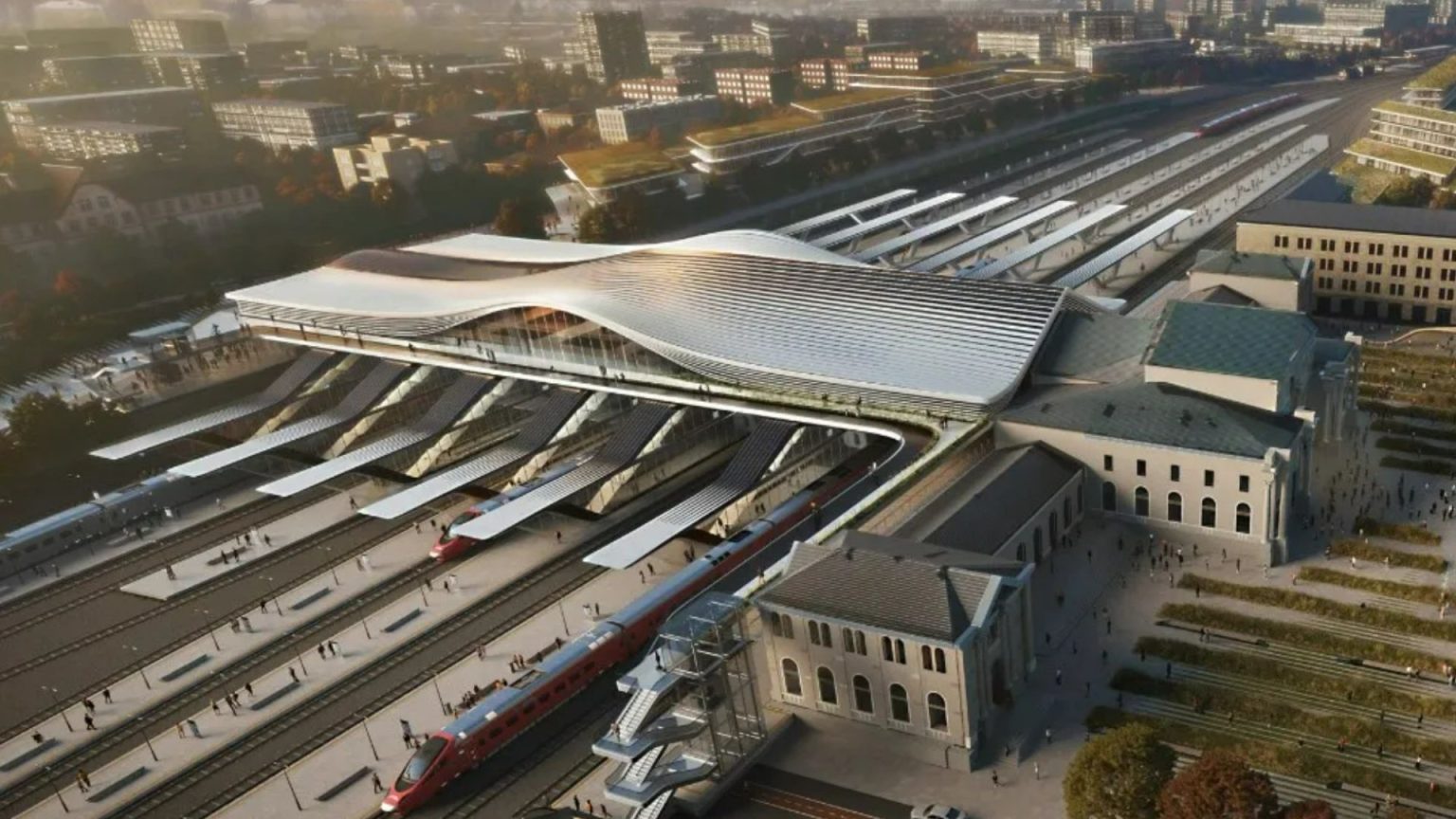The Baltic states of Estonia, Latvia, and Lithuania are embarking on a transformative rail project, Rail Baltica, set to revolutionize transportation in the region by the 2030s. This ambitious £13 billion endeavor will establish a 540-mile high-speed rail line connecting the three countries, fostering economic growth and seamless travel. Central to this project are the construction and redevelopment of modern, state-of-the-art train stations designed to be both functional and aesthetically striking. One of the most prominent examples is the comprehensive redevelopment of the historic Vilnius train station in Lithuania.
The Vilnius train station, originally opened in 1869, carries a rich history, having been destroyed during World War II and subsequently rebuilt in 1950. After undergoing renovations in both 1998 and 2023, the station is now poised for a dramatic transformation spearheaded by the renowned British firm Zaha Hadid Architects. The redesigned station will feature a striking bridge-concourse above the tracks, incorporating footbridges and bike lanes to seamlessly connect the station to the city center, old town, and southern neighborhoods. This multi-modal approach aims to enhance accessibility and promote sustainable transportation options. The exterior spaces will be further enhanced with additional seating areas, greenery, and the integration of a new bus depot and car parking facilities, creating a vibrant and welcoming transportation hub.
Zaha Hadid Architects envisions the Vilnius station as a “future-proof transport hub designed with the passenger experience in mind.” This passenger-centric approach is reflected in the station’s design, which prioritizes functionality, comfort, and aesthetics. The incorporation of natural light, open spaces, and intuitive wayfinding will create a seamless and enjoyable travel experience for passengers. The station’s redevelopment is a testament to the commitment of Rail Baltica to prioritize passenger well-being and create a truly world-class transportation infrastructure. This ambitious project goes beyond simply upgrading a train station; it represents a holistic approach to urban development, seamlessly integrating transportation, public spaces, and urban planning to create a vibrant and interconnected city.
Complementing the Vilnius station redevelopment, the Vilnius International Airport is also undergoing a substantial £41.6 million renovation. Projected to handle up to 17 million passengers by 2052, the airport is expanding its capacity with a new departure terminal set to open this month, doubling passenger traffic. A new arrivals terminal is scheduled to open by 2028, further enhancing the airport’s ability to accommodate the anticipated growth in passenger numbers. The strategic combination of the Rail Baltica project and the airport expansion will position Vilnius as a major transportation hub, facilitating international connectivity and boosting economic development.
Another key component of the Rail Baltica project is the construction of the Ülemiste Linda International Passenger Terminal in Estonia. Also designed by Zaha Hadid Architects, this new station is expected to commence construction this year and open by 2028. The Ülemiste terminal will serve as a crucial link in the high-speed rail network, enabling trains to travel at speeds of up to 155mph. This will be the first rail connection of its kind linking the Baltic states, marking a significant milestone in regional transportation. The terminal’s modern design will reflect the innovative nature of the Rail Baltica project, while its strategic location will optimize connectivity and facilitate seamless travel within Estonia and beyond.
The Rail Baltica project is not simply about building new train stations; it is about creating a new era of connectivity and opportunity for the Baltic states. The project is expected to generate significant economic benefits, fostering trade, tourism, and regional development. By facilitating faster and more efficient travel between the Baltic countries and beyond, Rail Baltica will unlock new possibilities for businesses, commuters, and tourists alike. The project’s commitment to sustainability is also noteworthy, with the high-speed electric trains offering a greener alternative to traditional transportation methods. Rail Baltica embodies a forward-thinking approach to infrastructure development, prioritizing both economic growth and environmental responsibility. Furthermore, the project aims to further connect to Poland and Finland, expanding its reach and impact. When completed, the total cost of the project could reach £20 billion, reflecting the scale and complexity of this transformative undertaking.
The redevelopment of the Vilnius train station and the construction of the Ülemiste terminal are just two of the many exciting developments taking place as part of the Rail Baltica project. These projects symbolize the ambition and vision of the Baltic states to create a modern, interconnected, and sustainable transportation network. As the project progresses, it will undoubtedly bring about significant positive changes to the region, fostering economic growth, improving connectivity, and enhancing the lives of countless individuals. The Rail Baltica project stands as a testament to the power of collaboration and innovation in shaping a brighter future for the Baltic region.











